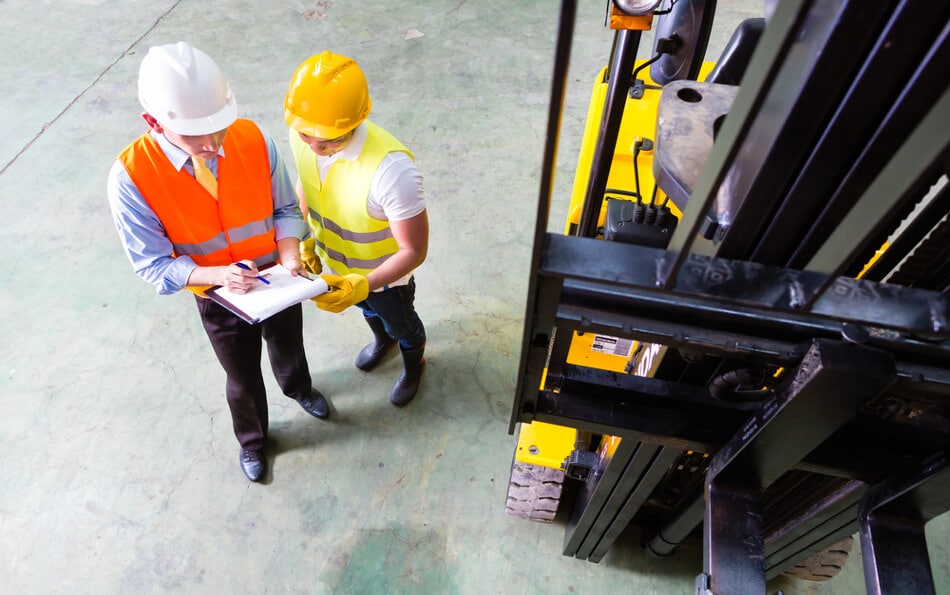Digital checklists are simply automated to-do list forms designed to define on-site and off-site workflow actions. The idea is to trigger a corresponding construction checklist template when a checklist form is created, edited, signed, completed, or blocked, and specific user/s or task owner/s are notified reactively via app or email about the tasks assigned.
Digital checklists function in assigning to-do tasks that can be configured to be set off when tasks are marked on the list, which then delegate a cascade of actions that would not need administrative monitoring in each step of each process. Scenarios include equipment tracking, timekeeping, accident and incident reporting, routine construction site risk assessment, compliance inspections, etc.
Automated construction checklists are better than manual follow-Ups
The modern construction site is now a very fast-paced environment with no tolerance for errors. This leaves a lot of responsibilities and administrative work for your project manager and supervisors. When there is so much work going on, it would be impossible to keep track of everything on-site and off-site, making it difficult to ensure that tasks are executed by the correct people and followed up on point every time.
Digital checklists are a smart solution to make on-site employees autonomous while connected to everyone, helping you achieve your building and project goals. Here are some reasons why they are better than manual delegation and follow-ups:
- Less of the unnecessary paperwork. When everything is standardised and put into a centralised platform, there’s no need to complete annoying paperwork after the actual work on site, without having to rummage through piles of paper checklists or Excel checklists when discrepancies are noticed.
- Accountability. As everything is transparent—what task, who’s responsible for each task, when’s the expected deadline, wherein the worksite—as all these can be seen by everyone with real-time updates, every team member is responsible for his task with clear tracing of the workflow. The project manager can follow every activity in day-to-day work.
- Connected and smart workflows. All work can be pre-listed in your checklists, with forms you can directly fill up as you go along with your work or inspection, while sending notifications to other team members for connected tasks in a workflow. Remember, in a roll out of a construction project, the smallest mistake in a sequence of tasks cause non-obvious problems and expensive delays. A checklist keeps a logical sequence of your works, which prevent expensive re-works and extra work later on.
- Issues are identified before they can cause delays or problems. A real-time system provides quick insight on incidents and equipment status that are difficult to gather with paper forms. This enables a better preventative maintenance system with great foresight on purchase and problem-solving decisions.
- Faster turnaround on problematic equipment. With so many construction equipment, it would usually take days or weeks to fix or follow up once an equipment issue is identified because of all the different channels of reporting. Digital checklists reduce that to minutes or hours with quicker reporting and real-time follow-ups of the issue.
Examples of construction checklists for better administrative workflow
We have compiled essential construction checklists that could help you manage critical processes, standardise processes of completing your recurring on-site tasks, help your stakeholders and teams own their responsibilities, and help your overall construction business achieve your project goals. We have also included brief guidelines on how they can help you improve your processes.
General hazard assessment checklist
Maintaining a safe working environment is a key responsibility for your project manager. The consequences of failing to do so can be costly, both financially and in terms of reputation. Having a specific and standard OSHA-based checklist is essential for properly conducting worksite inspection and hazards evaluation.
Pre-construction risk assessment checklist
Managing the health and safety of your organisation and workplace involves routine checks and risk control of common construction hazards. A bit similar to your safety inspection list, pre-construction risk assessment includes additional evaluation of your workers’ awareness of common risks in the worksite.
Personal protective equipment walkaround checklist
Regular inspections are required to ensure that personal protective gear are working properly, as well as identifying potential work hazards that may be in contact with the body.
Tools pre-use inspection
In order to ensure that power tools and related equipment are working safely, pre-use inspections make sure that tools and equipment are in good working condition and are safe to use.
Did you know that by adding a digital signature to your checklist, you’re adding better workflow control to your on-site construction processes?
Custom-make your own construction checklists specific to your worksite
If you are not the kind to use pre-made construction templates, you can actually create your own that is specific to your needs in your worksite.
However, before you create your own checklists, it is important to know what makes a functional checklist. After all, you want your checklist to help you save time. Making a unique checklist for your project team and workplace is an important start since it gives you and your on-site team ownership over your processes. The goal is to build and embrace a culture of teamwork and discipline, not just to check boxes.
You can even start with a primary template, and just customise it to fit your team’s exact workflow. Your company and job roles will help you determine what kind of checklist is useful for you. Remember, your checklist should be work and work processes that are often repeated and in predictable order – you standardise them and put them into most important steps.
For additional checklists, check out this construction checklists ultimate guide to save time and money using automated construction checklists workflow.




